Article
The 3 Jewels of Haarlem, Holland
Author(s):
Stepping back in time in Haarlem is easy, cost effective, and exceptionally delightful. It belongs on the bucket list!
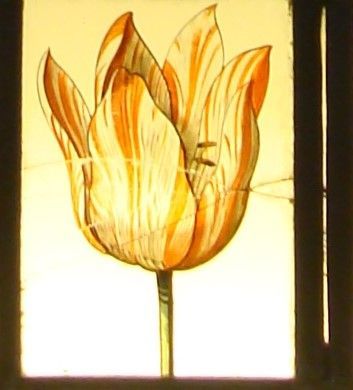
A tulip from within a stained glass window in the Franz Hals Museum in Haarlem, Holland.
The Frans Hals Museum
Move over, Rijksmuseum. If the Frans Hals wasn’t primarily a one-person museum, it would give the Rijksmuseum a run for its money. Architecturally, the building is beautiful. The interior is no less grand.
What is now the Franz Hals Museum was built between 1607 and 1610 as a charity house for elderly men. Today, both the main building and gate are original. The structure has served as the Franz Hals Museum since 1913.

The pleasant block where the Frans Hals is located. Notice the museum flag on the right.
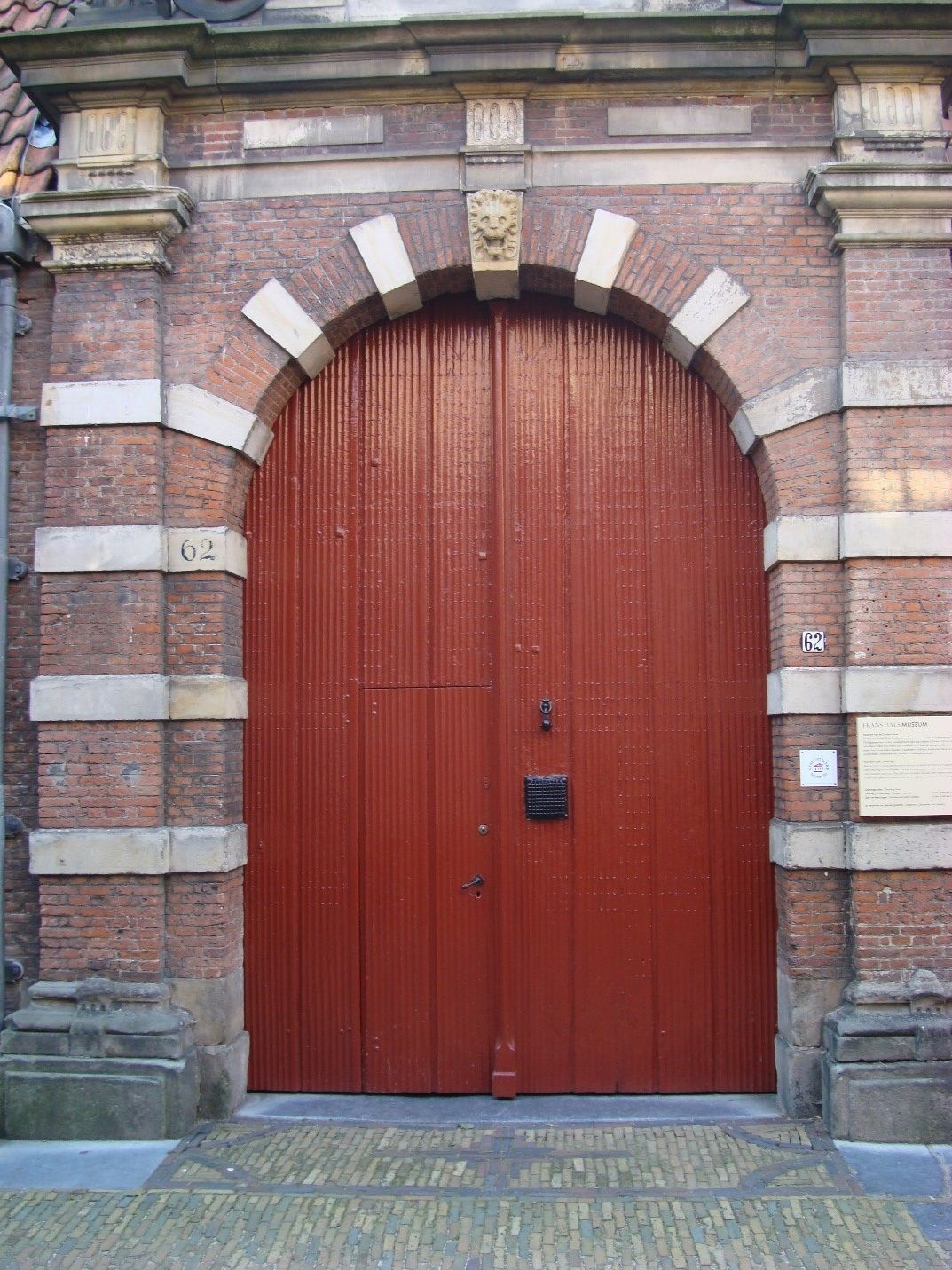
The colorful door leading into the Frans Hals Museum.
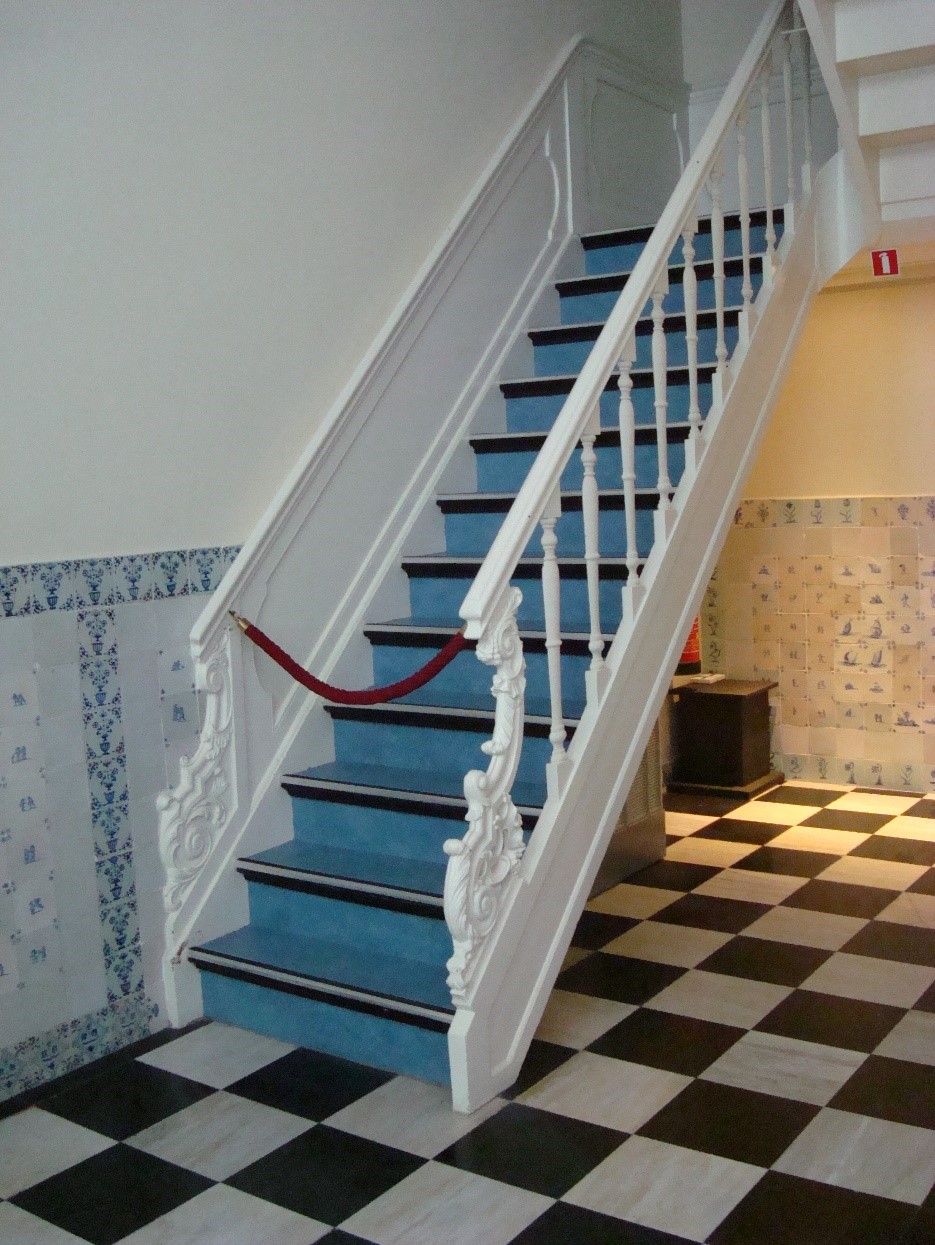
The pristine interior of the Frans Hals Museum.
Within the museum itself, there is so much to see that only a small portion can be covered here. The Banquet of the Officers of the Saint George Civil Guard by Frans Hals is arguably the most interesting. That is partly because it has as its companion a “concept and styling” table by Ruud van der Neut (a resident of Haarlem) that demonstrates the officer’s table after their meal. This addition has increased visitor viewing time from 40 seconds to 4 minutes (source: Ruud van der Neut) in this section.

The “After the Civic Guard Banquet” styling table is in front of the Frans Hals painting. This addition has increased viewer time in the room.
Grote Kerk
Be prepared to be overwhelmed. The Grote Kerk in the center of Haarlem is huge, visually appealing, and thought-provoking. In terms of a church with space, you can’t do better.

The interior of the Grote Kerk. This photo was taken from less than halfway back in the church. This means its length is double what is illustrated in the photo.
In the 15th Century, the present church location was already a place of worship. By 1573, a cannon ball was lodged in its wall when Haarlem was in siege by the Spanish during the eighty year war.

The cannon ball lodged in the Groote Kerk wall during the Spanish siege in the Eighty Years’ War.
In 1776, a 10-year-old Mozart played the Grote Kerk organ. Until 1831, wealthy people were buried in the church leading to the term, “stinking rich.” According to information at the church, the rotting bodies gave off a foul odor.
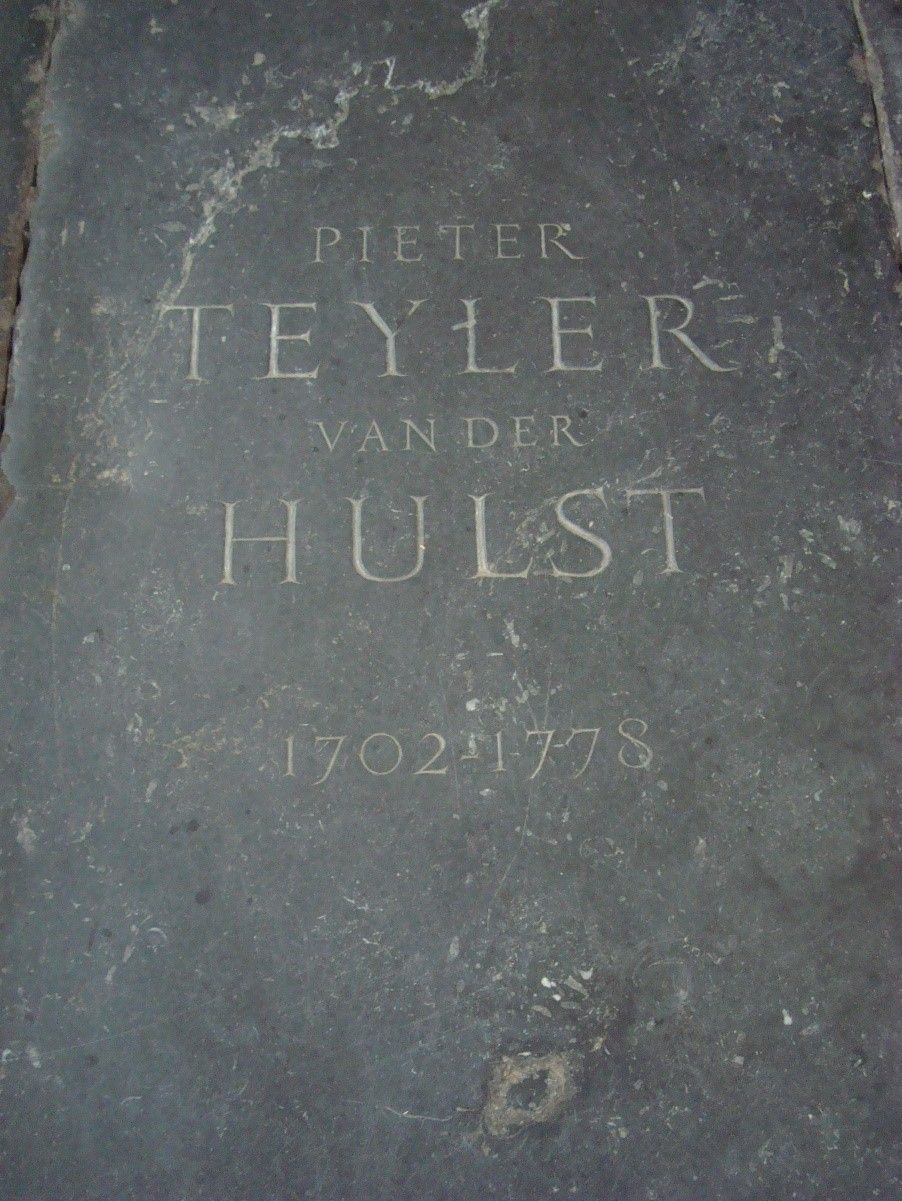
Pieter Teyler van der Hulst’s gravestone (see more about Teyler below) within the Groote Kerk.
The Teylers Museum
Nothing could have prepared me for the throwback in time that the Teylers Museum engenders. It is the oldest museum in the Netherlands and in so many ways still intact. I can easily say that of everything my husband and I saw in Holland, Helsinki, and the Baltics on our recent trip, this is what sent me into rapture, Stendhal’s Syndrome, if you will.
The museum is named after Pieter Teyler van der Hulst (1702-1778) who was a Haarlem banker and merchant. He died childless with an estate equivalent to 80 million Euros in today’s currency. In his will, he designated that the money should be placed into a foundation that would promote the arts and science. The result is the museum. It was built as an extension to the residence Teyler occupied when he was alive. The “cabinet of books and art,” known as the Oval Room was opened to visitors in 1784.
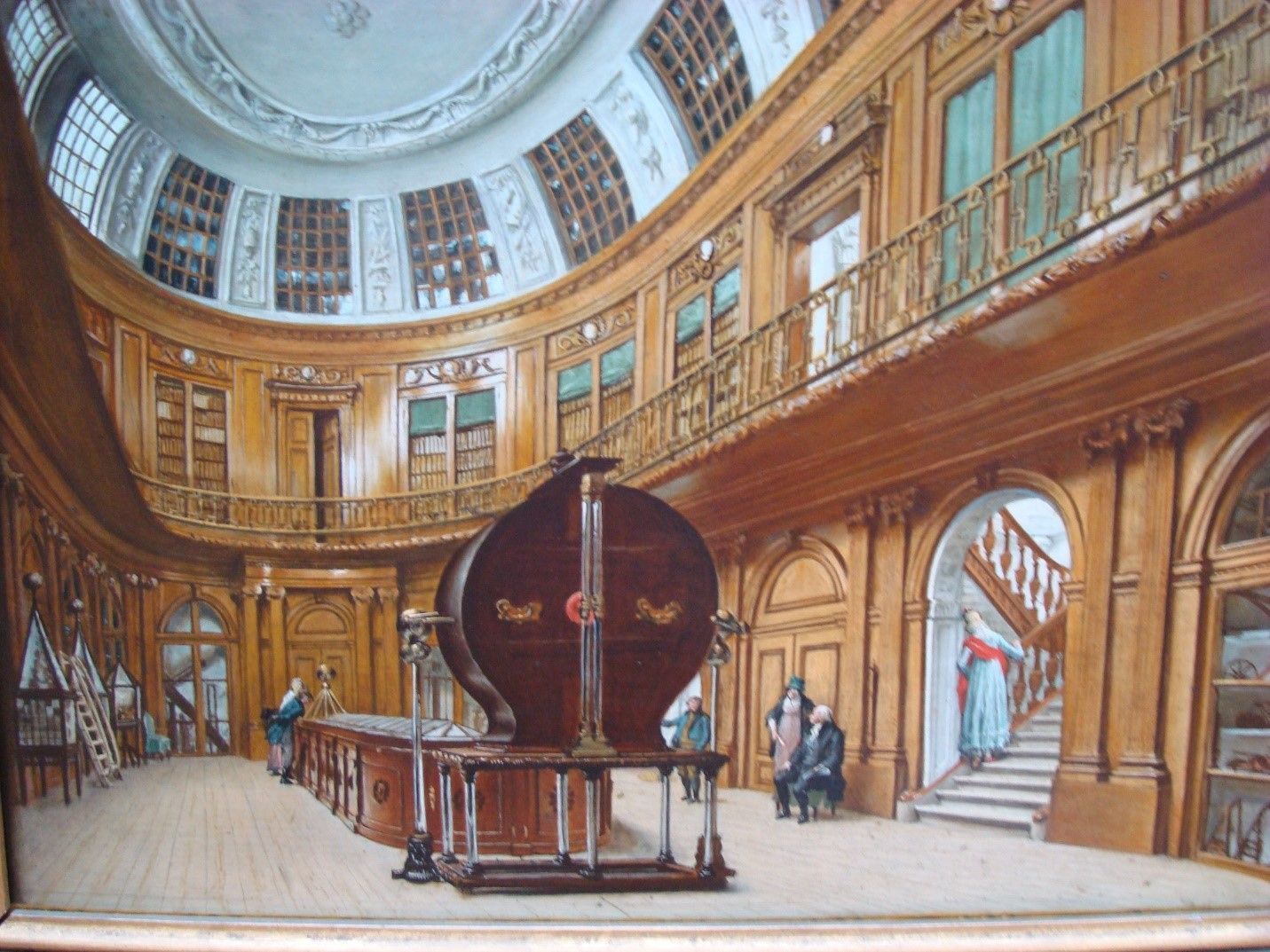
The Oval Room at the Teyler’s Museum in a painting by Wybrand Hendricks (1744-1831), the painting roughly around 1800. Notice the maid in the stairway to the right. It was the connection to Teyler’s residence when he was alive. Painting reproduction From Wikipedia.
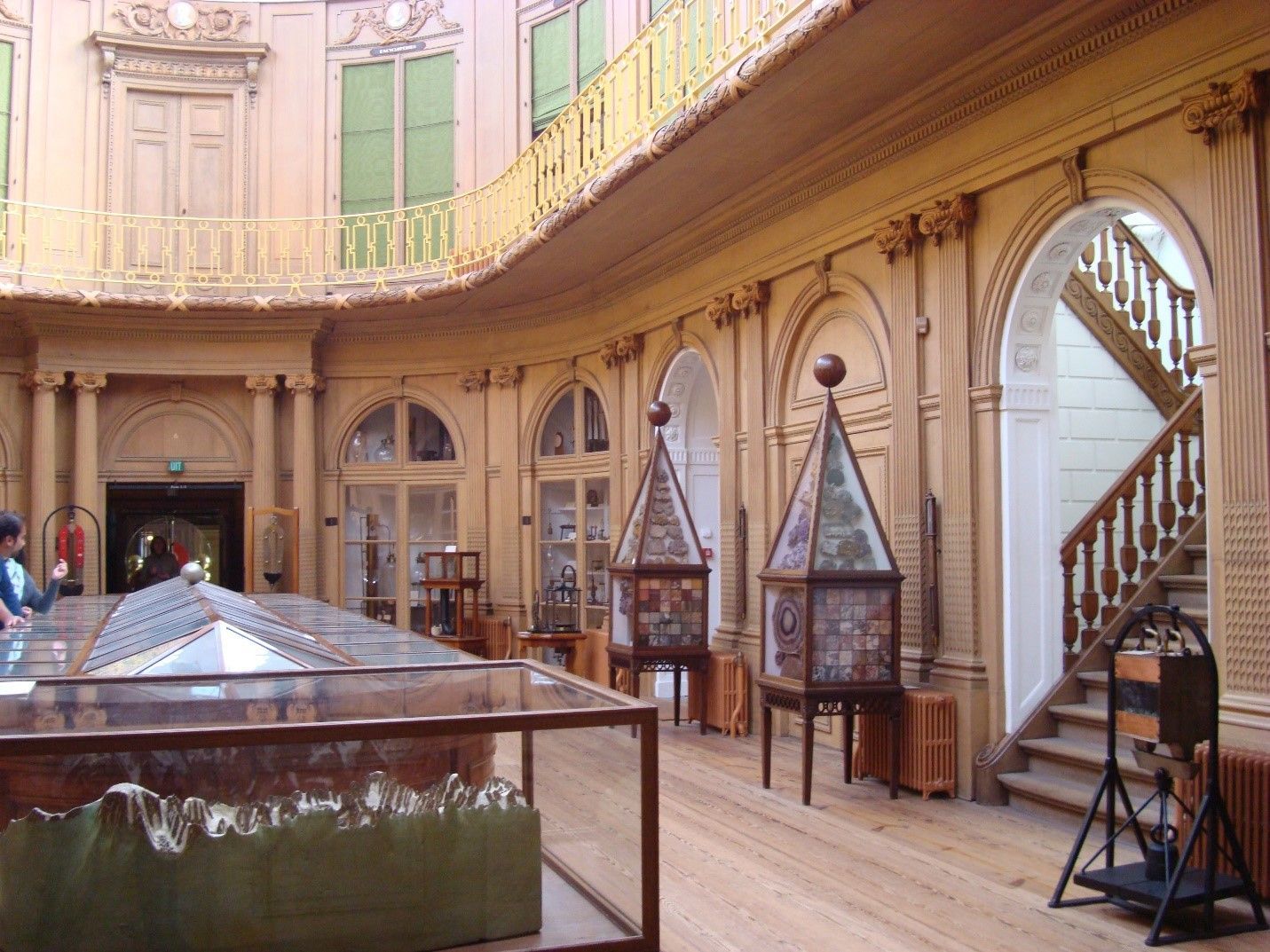
The interior of the Oval Room at the Teyler’s Museum today. Notice that it is almost identical to the Wybrand Hendricks painting (above) sans the maid of course.
At the time of the opening of the museum, the scientific exhibits consisted largely of fossils. There are 3 rooms devoted to these displays. An instrument and luminescence room are also included. In 1830, a prints and drawings room was added.

A skeleton in one of the three fossil halls in the Teyler’s Museum in Haarlem.
So, stepping back in time in Haarlem is easy, cost effective, and exceptionally delightful. In my opinion, it belongs on the bucket list!
Photos by the author.
More about Holland:




